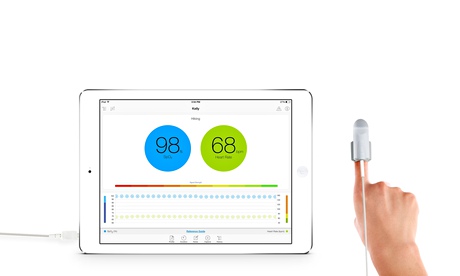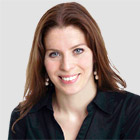Accessible healthcare solutions that use just a mobile phone are being used simultaneously by patients in both developing and developed markets

Technology-based mobile health is taking off in developing countries. Photograph: Lionsgate Technologies
Soon opticians – and even their assistants – will be able to check people's vision using just a mobile phone, and it won't matter if they're not sure what they're seeing because the phone will know what to look for. Space-age future? Far from it. The eye-miracle phone is already here. In fact, it's being used in the world's poorest countries.
"Smartphones have been getting better and better, and the fortuitous coincidence is that their optical elements are so small, in fact smaller than a pupil", explains Dr Iain Livingstone, a paediatric ophthalmologist atPeekvision, the UK-based organisation behind the technology. "With a few tweaks, we can put that to our advantage."
Peekvision's technology utilises an ordinary smartphone, which can be used in place of the expensive and complicated ophthalmoscopes that have been a mainstay of eye exams for decades. This is how it works: an optician or even a minimally trained healthcare worker points the adjusted smartphone into the patient's eye. The phone automatically focuses on what it's supposed to look for – say, a cataract – and captures the image, allowing the healthcare worker to send it on to more qualified experts by email or text message.
"That circumvents the training an optician needs in order to operate an ophthalmoscope and understand its results", says Livingstone. "Anybody can conduct the eye exam."
With blindness being preventable in 80% of cases, there's an obvious need for eye exams, especially in the developing world. Peekvision's mobile phone has already been introduced in Kenya (and Scotland) and found to reliably identify and photograph not just cataracts but severe diabetes and macular degeneration as well. All three are leading causes of blindness. In fact, Peekvision – which is supported by the Queen Elizabeth Diamond Jubilee Trust, the London School of Hygiene and Tropical Medicine, the Medical Research Council and several other institutions – is just one of many new startups and non-profits trying to merge high-tech and healthcare in developing countries.
Researchers at Harvard and MIT, for example, have developed a technology that allows medical assessments to be encoded onto smart-phones, links with ultrasound and x-ray machines, and sends the information to a central database. Medic Mobile, started in a Stanford doom room several years ago, allows healthcare workers to monitor patients far from clinics using a mobile application. Indeed mobile health (mHealth, in today's jargon) is growing rapidly, with PWC predicting a $23bn (pdf) market by 2013, up from $500m in 2010.
Here's the challenge: even though developing countries, with their less extensive healthcare infrastructure, would benefit the most from mobile health, they're only predicted to account for a small share of the market, in Africa's case 5% by 2017, according to PWC. And even though their smartphone penetration rates are expected to climb from today'saverage of 8% (pdf), emerging economies won't be a massive smartphone market anytime soon. Writing in the Canadian Medical Association Journal last year, Dr Ivan Mendez of the University of Saskatchewan notes that undependable signal strength poses another challenge to smartphone-driven healthcare in developing countries.
But, says Tom Walker, CEO of Lionsgate Technologies, his company's business plan doesn't rest on selling lots of healthtech-equipped smartphones in developing countries. On the contrary, its strategy is to simultaneously tap into mobile health in both wealthy and emerging markets. The Vancouver-based company has developed smartphone applications where the phone screen acts as a monitor, while a sensor is connected to the audioport.
"The phone can be used as a diagnostic tool for the developing world and a self-diagnostic tool in the developed world", explains Walker. "There's no reason that a low-cost blood-pressure tool can't sell well in, for example, the north American market."
In Lionsgate's business model, sales in the developed world will essentially underwrite activities in emerging markets. The company's applications for the developing world focus on healthcare workers using smartphones equipped with the technology to diagnose common diseases and medical problems such as pneumonia and preeclampsia. In wealthy countries, by contrast, it will give patients suffering from chronic conditions the option of managing some parts of their illnesses on their own. For example, the same application that's used to diagnose pneumonia in the developing world can be used by patients suffering from chronic respiratory diseases in the United States, allowing them to make regular readings using simply the specially equipped smartphone. That's a potentially huge saving in healthcare costs. Given that chronic illnesses account for 75% of healthcare spending in the United States, for example, the market could clearly take a lucrative turn for LionsGate and companies like it. Indeed, two-year-old Lionsgate expects to be profitable by 2016.
To be sure, Americans and Brits won't be conducting their own blood oxygen readings en masse any time soon. But for perhaps the first time ever, they may soon be using the same healthcare solutions as their fellow patients in the developing world.

No comments:
Post a Comment